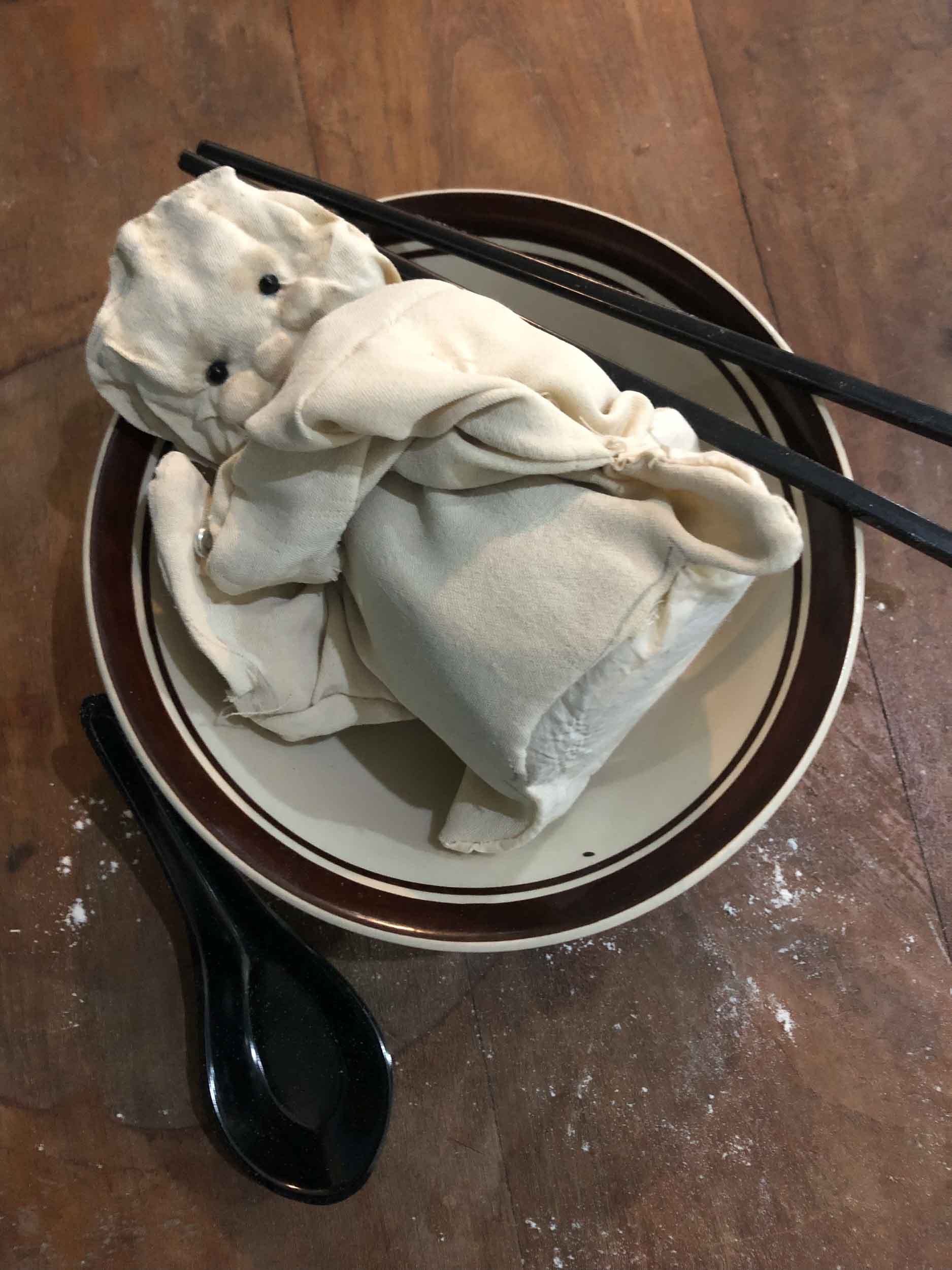Meeting the Goddess
After Pesta Boneka, I had the difficult job of sorting through my ideas and figuring out which ones would best serve the story I wanted to tell. A huge turning point in my creative process was a conversation I had with Papermoon’s artistic director and co-founder, Maria Tri Sulistyani (Ria).
Above (from left to right): my very first idea for a ‘noodle puppet’, to the final ‘dough puppet’ prototype
In the first half of my residency, I spent a lot of time creating these long noodle-esque puppets made from fabric and clay. I had tested numerous features with these puppets like how a hand could change into a wing which could double as a bird tail. I had prototypes for the mechanism of bird legs, and how a mouth could become a beak. I thought I was sussed. But then, I was talking to Ria, and I showed her my puppets. And she asked me this very simple question: If your puppets are supposed to look like dough, how can you recreate the same reaction people have when looking at dough?
Side note: This discussion happened at the exact midpoint of my residency. And if I was a character in Dan Harmon’s story circle, this would be where I meet the goddess (which, considering Ria’s legendary status, is kind of accurate). It’s the turning point in the hero’s journey where they get what they want, good or bad, that propels them upwards.
Upwards for me, meant starting again from scratch. That evening, I went straight to my local Superindo and bought some flour. And I spent the night making Mee Hoon Kueh dough. I documented how the dough looked and moved when stretched or put under pressure. The next day, I made little faces and characters out of the dough. I was doing what my parents always told me not to do as a child: play with your food. But I discovered so much from these experimentations. My dramaturge back in Aotearoa (an absolutely wonderful woman by the name of Rachel Callinan) and I were both kicking ourselves at how obvious Ria’s suggestion was.
But as the Harmon’s story circle goes, the hero must then have to pay a heavy price. For me, time was running out. I had to prepare a public presentation at the end of my residency, and I was wearing too many hats: puppet designer, puppet marker, actor, writer, director and chef (did I mention my show also involves cooking? It does). But as they say, pressure makes diamonds.
‘Sketching’ character design with Mee Hoon Kueh dough
The discussion I had with Ria taught me a huge lesson in puppetry design: materiality is everything. Unlike human actors, puppet makers and puppeteers have full control over how a puppet looks, feels and even moves. Material choice hugely influences how audiences will respond to the puppet. Audiences aren’t just experts in reading body language, they also innately understand how objects and materials make them feel. And it works both ways, just as the materials shape our audience response, they also shape the limitations of what the puppeteer can do. So, as a puppet maker and story-teller, these are the questions I have to always bear in mind:
What is the story I want to tell?
What is the experience I want to create for my audience?
How do my design choices (material, scale, mechanisms) support the story I want to tell and the audience experience I want to create?
The biggest win I got from my presentation was hearing the audience’s response to the puppets. They loved how they looked so squishy and similar to pastry dough and dumplings. To them, I wasn’t just a puppeteer with some soft sculpture puppets. It was as if I was a real chef working with my dough.
Puppets created for my end of residency presentation. Photo by Achmad Mirza Siregar
My residency with Papermoon Puppet Theatre was made possible with generous funding from Asia New Zealand Foundation’s Artist Practitioners Fund.





